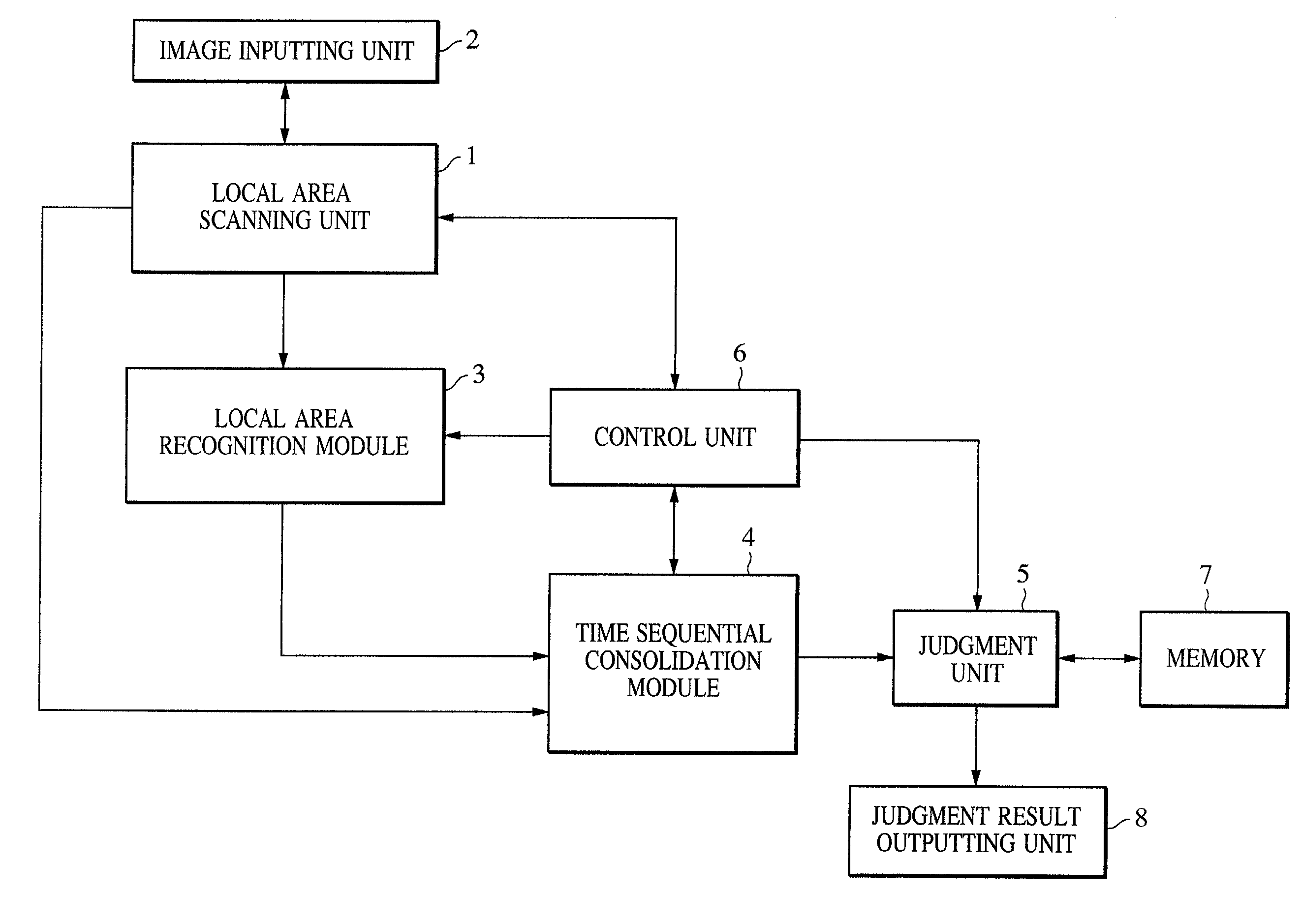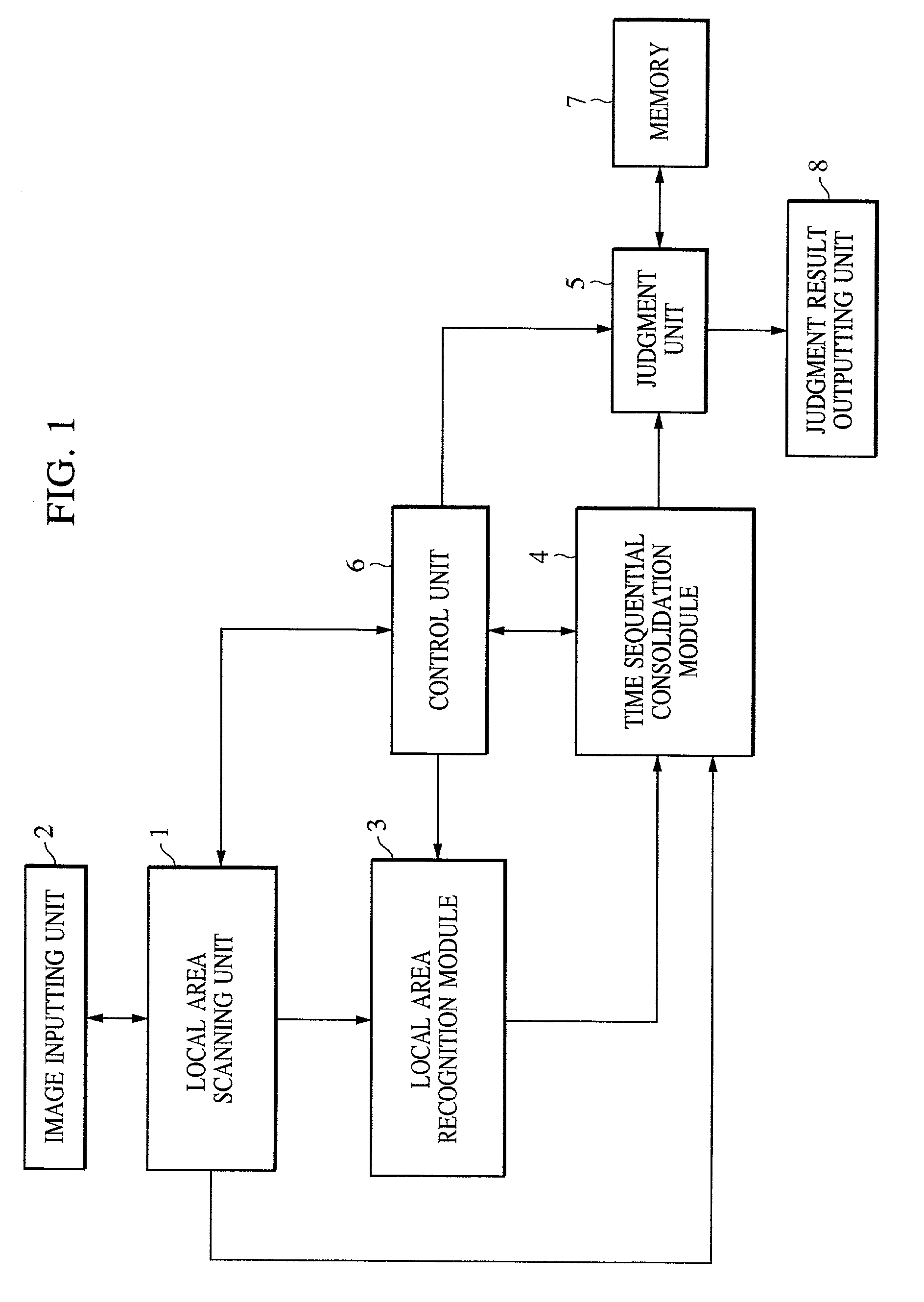Pattern recognition apparatus using parallel operation
- Summary
- Abstract
- Description
- Claims
- Application Information
AI Technical Summary
Benefits of technology
Problems solved by technology
Method used
Image
Examples
first embodiment
Brief Description of the General Construction and Respective Elements
[0037]A first embodiment is described in detail below with reference to the accompanying drawings. FIG. 1 generally illustrates a pattern recognition apparatus according to the first embodiment. The pattern recognition apparatus includes a local area scanning unit 1, an image inputting unit 2, a local area recognition module 3, a time-sequential consolidation module 4, a judgment unit 5, and a control unit 6 for controlling the operations of the above units or modules. Functions of the respective units / modules are described below.
[0038]In accordance with a control signal supplied from the control unit 6, the local area scanning unit 1 defines, in the data input via the image inputting unit 2, a local area with a rectangular shape (block shape or another shape) having a size determined by the control unit 6, at a sampling point position which is changed one by one. In the block scanning process, it is desirable that...
second embodiment
[0091]In this second embodiment, the sampling point position scanned by the local area scanning unit 1 is changed in accordance with a predetermined procedure (raster scanning procedure), and the block size is fixed (based on the predetermined maximum size of an object to be detected). Thus, in the present embodiment, the controlling of the sampling point position during the process does not depend on the output from the local area recognition module 3. As in the previous embodiment, the local area recognition module 3 detects a middle-order or high-order pattern. The construction of the pattern recognition apparatus is similar to that according to the first embodiment.
[0092]Of course, high-order patterns to be detected should have a size smaller than the block size. Scanning is performed over the entire input data without changing the block size. As in the first embodiment, the local area recognition module 3 includes processing channels assigned to different object sizes to detect...
third embodiment
[0102]In this third embodiment, the size of the block-shaped local area defined by the scanning unit 1 is controlled by a block setting unit (not shown), and consolidation and recognition are performed by the local area recognition module 3, the time-sequential consolidation module 4, and the judgment unit 5. As in the first embodiment, the local area recognition module 3 includes a plurality of parallel processing channels corresponding to different scale levels. The block size may be updated according to one of two methods described below. In the first method, the control unit 6 determines the block size at each scanning position, and the local area recognition module 3 outputs data at each scanning position. In the second method, consolidation and recognition are performed by scanning the entire input data while fixing the block size. Thereafter, the block size is changed and consolidation and recognition are performed for the updated block size.
[0103]In the second method, in man...
PUM
 Login to view more
Login to view more Abstract
Description
Claims
Application Information
 Login to view more
Login to view more - R&D Engineer
- R&D Manager
- IP Professional
- Industry Leading Data Capabilities
- Powerful AI technology
- Patent DNA Extraction
Browse by: Latest US Patents, China's latest patents, Technical Efficacy Thesaurus, Application Domain, Technology Topic.
© 2024 PatSnap. All rights reserved.Legal|Privacy policy|Modern Slavery Act Transparency Statement|Sitemap



